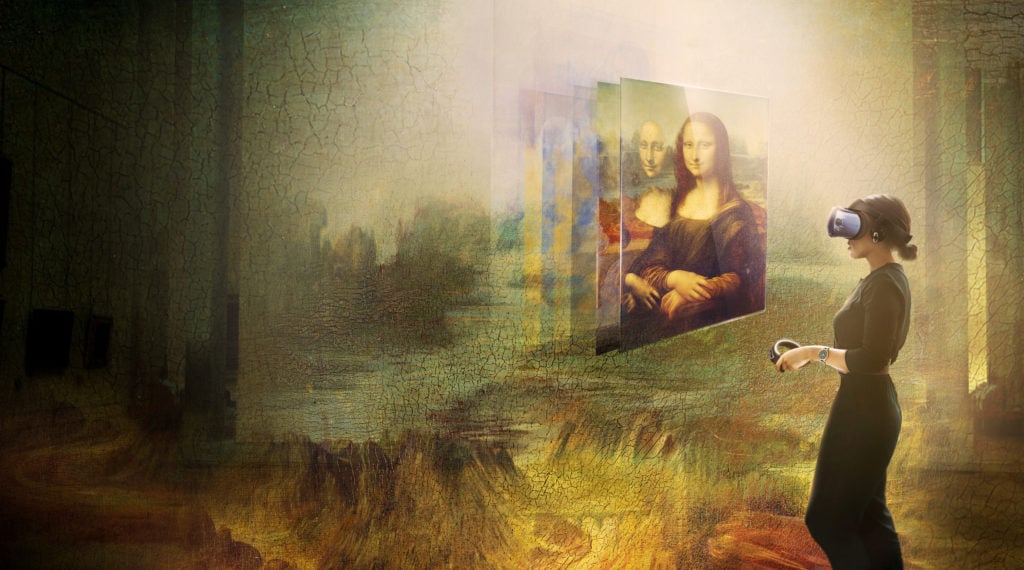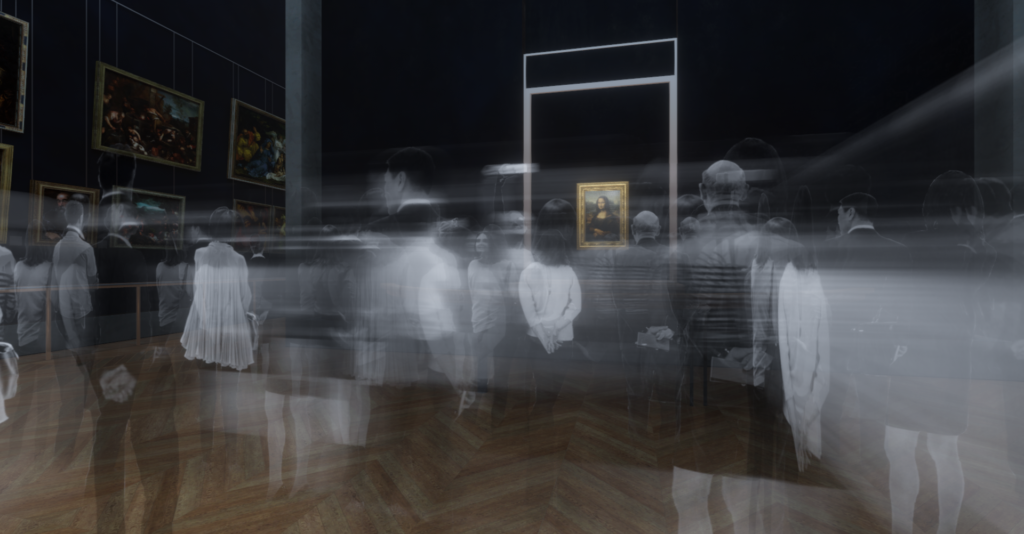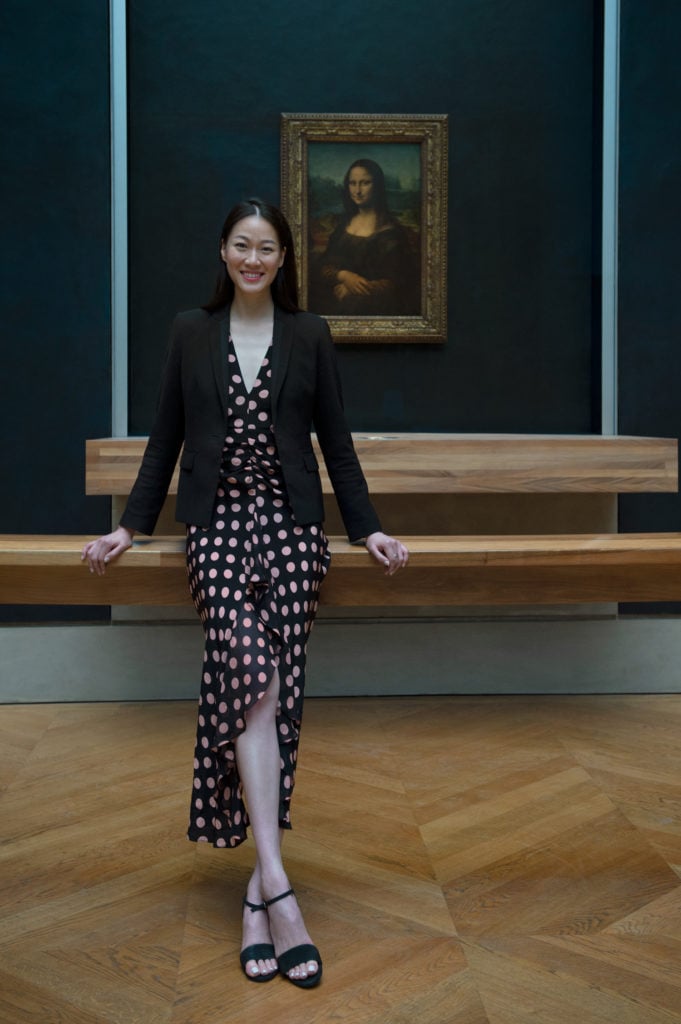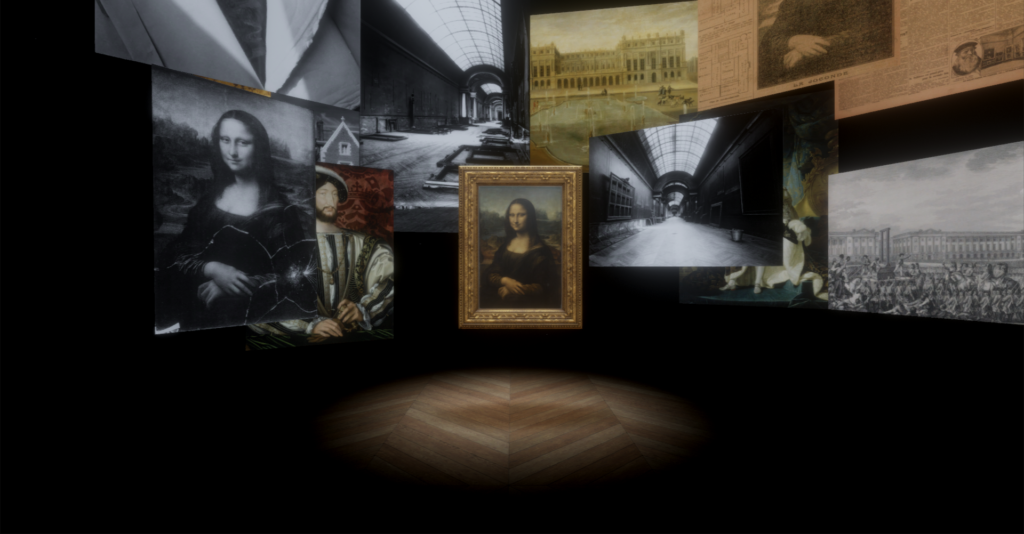Art & Exhibitions
The ‘Mona Lisa’ Experience: How the Louvre’s First-Ever VR Project, a 7-Minute Immersive da Vinci Odyssey, Works
Experience the 'Mona Lisa' without the crowds.

Experience the 'Mona Lisa' without the crowds.

Naomi Rea

Sometimes visitors to the Louvre can have a hard time glimpsing the Mona Lisa. It’s just 30 inches tall, tucked behind a layer of bulletproof glass and, more often than not, a throng of tourists jostling to capture selfies. While the museum has recently introduced a single-file line system to try and get around the over-crowding, around 80 percent of the museum’s 10 million yearly visitors still wend their way to the Salle des États to catch a glimpse of the work.
The problem is so great that the painting could not be included in the museum’s blockbuster Leonardo da Vinci retrospective, which opens on October 24, for fear that it would make the exhibition “practically unvisitable,” according to its curators.
But the museum has found a creative solution for the landmark exhibition. Working with the VR headset producer HTC’s Vive Arts program, the Louvre has launched its first-ever virtual reality initiative, offering visitors a seven-minute experience of a work titled Mona Lisa: Beyond the Glass.

Still from Mona Lisa Beyond the Glass. Courtesy of Emissive and HTC Vive Arts.
Visitors can strap themselves into the state-of-the-art headsets and learn snippets of information about Leonardo’s famous sitter, Lisa del Giocondo, as well as his artistic method and the history of the painting. It will immerse them in what could be the surroundings beyond the frame of what is depicted in Leonardo’s masterpiece, and, at the end, invite them to climb aboard an imagined version of Leonardo’s visionary flying machine—a sketch of which is also included in the exhibition—and soar across the landscape surrounding Mona Lisa’s luxuriant loggia.
The VR endeavor may sound like it’s all just a bit of fun, but it is actually part of a serious effort on the part of the Louvre to find new ways to reach a broader public. HTC’s Vive Arts was also responsible for bringing Modigliani’s final studio to life for Tate Modern’s blockbuster show on the artist in 2017.

Victoria Chang, director of HTC VIVE Arts. © 2019 HTC VIVE Arts.
“We think we can be useful to our museum partners because museums do have their existing audiences, but they are always in search of new ways to expand this audience, or to connect with this audience in different ways,“ Victoria Chang, the director of VIVE Arts, tells artnet News.
For many museums, digital experiences are introduced in an effort to grow visitor numbers, but as the most-visited museum in the world, the Louvre hardly needs to court new attendees. “The museum still wants to amplify whatever it does beyond those who can actually set foot in the museum,” Chang explains. “In this case we helped them by making this digital content, and making it available online across all virtual reality platforms.”
“We are not about figures,” Dominique de Font-Réaulx, the director of the Louvre’s interpretation and cultural programming department, says. “Figures are good, but what sense would it make to have 15 million people without accommodating them well? It’s nonsense.”
De Font-Réaulx says that the time was right for the Louvre to make its first foray into VR both because of the significance of the exhibition—marking the 500th anniversary of Leonardo’s death, it is one of the most high-profile museum events anywhere in the world—and because the exhibition’s curators were both open to the idea.

Still from Mona Lisa Beyond the Glass. Courtesy of Emissive and HTC Vive Arts.
The initial plan was to create an experience around Leonardo’s The Last Supper, because it would be impossible to bring the mural, which was painted onto the wall of Milan’s Santa Maria delle Grazie convent, to the exhibition. But the museum ended up going with the Mona Lisa because it was too difficult to get the volume of information about the work necessary to create a valuable VR experience from something that wasn’t in the Louvre’s collection. In the end, The Last Supper is present in the exhibition through an interesting copy by Leonardo disciple Marco D’Oggiono.
“We have many different publics and we have to accommodate all of them and the different types of questions they have, so offering different types of education is a crucial thing for us,” de Font-Réaulx says. The virtual reality was a new way to expand the museum’s existing devices, from the traditional wall labels to more recent audio and video guides.
The initiative is part of a broader plan to make culture accessible to a wider public. Efforts have been underway in France to redistribute some of its cultural resources around the country. The French culture minister Franck Riester plans to introduce a number of small-scale digital museums around France that will showcase high-resolution digital copies of works from the country’s 12 national public collections, including the Louvre, with people in remote regions. With more than $3 million invested in the plan, the small digital museums—dubbed “micro-folies”—are expected to number 1,000 within three years.
“We have been working very closely with our friends on the micro-folies, and we are also in discussions to possibly do something with the Mona Lisa VR but it is in early stages,” de Font-Réaulx says. “We are supporting it and doing different types of experiences for example, our education gallery, la Petite Galerie, is very often presented outside of the Louvre, both in museums but also in factories, in supermarkets, and different types of places. So it’s something that we are very passionate about.”
“Leonardo da Vinci” runs October 24, 2019, through January 24, 2020, at the Louvre in Paris.